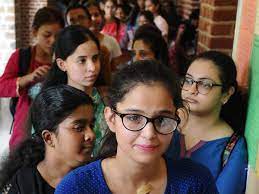As per the latest authoritative report in the London Financial Times newspaper (dated. 22, April, 2020), students from India, to be exact 2,11,015, migrated to the USA, UK, and other countries like Australia and Canada for higher education. This is not a one-off event but a trend that is going on for years. And because of the coronavirus thing, it has become more complicated, and there is an enormous strain on parents and their children. They are stuck up with their children in India itself, and as things stand, the whole family is now facing many uncertainties.
A great many questions and dilemmas are about the further education of the children in the age group of 16-18; in so many families we hear talk of gap years and many new openings for the university age group youngsters.
As for the famed universities like Oxford and Cambridge too, there are, it seems new regulations by the government to make reservations and quotas to use a familiar plane expression to Indians, the British call it by other names that admissions are restricted and also the fees charged for the Indian students and the British ones are so vast, for Indian students something like Rs. 40-45 lakh while it is something like Rs.10 lakhs only for British students.
Also, one more factor that is not mentioned openly and clearly by all is that there is an enormous increment in numbers. More students want to enter universities, yet the physical space is only limited. Here, this writer likes to recall that when he went to Oxford in 1959, he was allotted a very spacious two-room accommodation and two scouts and servants! Now, the very same room space is divided into two rooms for two or even more students.
There are other severe issues like employment after your university. There is a rush to the US universities because of the better job prospects. You get jobs almost automatically in the USA, while in British universities the job prospects are instead dim somewhat!
There is an amusing story from one leading famous history professor, namely. Prof.Tapan Roy Choudhury. He writes that when he finished Oxford and came back home to Kolkata, he borrowed small cash from his dad to pay for his bus fare! This is not fanciful. This is the hard reality! The job prospects for the Oxford returned these days is much grimmer. There are no suitable career openings for UK-educated Indian youngsters. Employment prospects are becoming much more challenging. And the global migration trends are becoming more diverse.
We had pointed out already how the education scene in some countries are changing. In the Norcia countries, like Finland and Sweden, there are changes in education even in the Central European countries. In a country like Croatia with just 4 million people, with one million already at the capital, Zagreb, there is one story, a young electronic engineer had designed the world’s fastest electric car, the fastest exceeding the speed of other Italian models! Think about the education system of that country that created an innovation like this.
In short and in one brief observation, we like to say that Indian education must turn its direction towards such creative thinking and critical innovative push in all possible directions. Let every educationist and leader, even education entrepreneurs think in the same direction.
